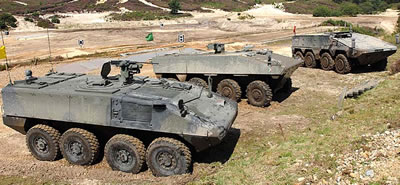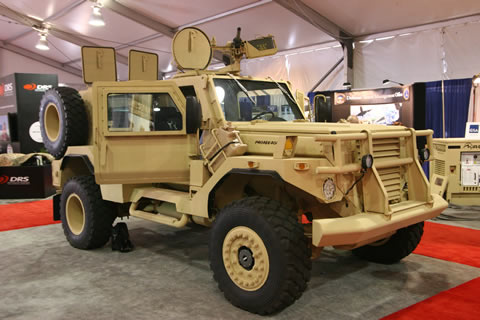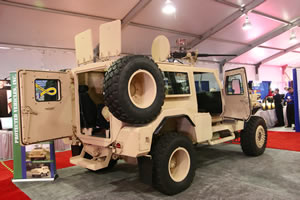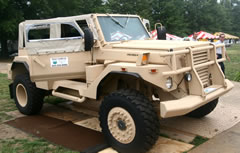Despite the happy faces portrayed in official photo opportunities on Condoleezza Rice’s last visit, the Bush sponsored Annapolis summit is doomed to failure. The Annapolis conference, as described by Secretary of State Rice, is to set the conditions for the creation of a Palestinian State- which is wishful thinking. But its failure to advance the peace process at next month’s conference in Annapolis could trigger worse violence than the second intifada that followed the failed Camp David talks in 2000, Marc Otte, the European Union’s (EU) Special Representative to the Middle East Process, warned last week.
Israel’s Prime Minister Ehud Olmert may have a temporarily ‘stable’ coalition, but is facing ‘mission impossible’ on all fronts: he cannot deliver anything significant, as did his predecessor Ariel Sharon.
There are over 200,000 settlers in the West Bank- which when push comes to shove will receive public backing over a large scale evacuation or even resettlement. No army or police in Israel will be able to implement a forced repeat of the Gaza disengagement after the fiasco which followed by incessant Qassam bombardment on Israel
The issues of Jerusalem and the refugee problem are unacceptable to the majority of the Israeli public including reasonable parts in bipartisan right and left.
There is no trust in any deal, worth its meaning with the Palestinians, based on the Oslo failure, Camp David 2000 and seven years of bloody Intifada. A look at the Palestinian educational program suffices to convince Israelis that a workable deal is totally illusory, at least until fundamental changes happen.
There is an unbreakable impasse in the West Bank. All previous attempts to turn the large cities over to a Palestinian authority security force failed miserably. Only a permanent Israel Defense Forces (IDF) and internal security agency (Shabak – ISA) presence has sofar foiled numerous attempts to infiltrate suicide attacks inside Israel. Moreover, only IDF presence has prevented the West bank turning over to Hamas rule as in Gaza.
On the Palestinian side, President Mahmoud Abas ( aka ‘Abu Mazen’) has nothing to offer Israel in return to any concessions. He actually rules no more than a small fraction of Ramallah, from his walled Muqatah fortress. All other cities in the West bank, ranging from Jenin in the North, to Nablus, Tul Qarem, Qalqiliya, Bethlehem and Hebron are all controlled either by local warlords, acting entirely according to their local interest, or by Hamas. Abu Mazen has neither the power nor the means to enforce law and order in the prevailing chaos (remember the Gaza fiasco last June), nor the political prestige to exert any authority, even in his close neighborhood.
Moreover, as long as Hamas is ruling the Gaza Strip, with about half of the Palestinian population, Abu Mazen has no choice but to make peace with the fundamentalists and recreate a new unity government, with which of course Israel will refuse to deal.
But the main stumbling block remains over Jerusalem, the holy sites on Temple Mount, the refugee problem and mutually accepted borders: to mention only a few of the hot topics. Any concessions, which will endanger Jerusalem from the West, East, North or South, will be unacceptable to Israel. Period. Giving up the holy sites will not only create acute problems in Israel, but become unacceptable by Jordan and especially Saudi Arabia, which regards Palestinians as secular and unfit to rule the holy sites. Moreover any withdrawal of troops from the strategic Jordan Valley and giving it to Palestine will create a strategic void between Israel and Jordan, threatening the Hashemite rule.
Even President George W Bush, who in the first place gave birth to this idea, in desperate effort bolster his flagging Mid East strategy, seems losing confidence.
Already becoming somewhat skeptical over its questionable outcome, Mr Bush is reported at loggerheads with his close confidante, Secretary Condoleezza Rice over this highly controversial issue. A recent visiting Jewish delegation cooled his expectations further when voicing concern about Ms Rice’s Middle Eastern policies and the unrealistic expectations that she placed on the Annapolis conference agenda. Moreover is it still unclear which of the leading Arab nations will participate, or which level of personalities will attend, from nations that will accept the invitation. This itself is a crucial issue and based on the present situation, it seems highly doubtful that Saudi Arabia, which is the key to any serious negotiations, will be willing to send a prominent member, a move which Riyadh has never undertaken in any summits, to which Israel attended!
There are already rumors in Washington, that the Secretary of State places her personal ambitions to pull off dubious diplomatic feats ahead of America’s national security interests. Some sources in the Middle East ascribe her intense drive for a quite hopeless conference in Annapolis to the same motive.
A few elucidations are in place to explain the existing controversy over the Annapolis issue:
Based on past efforts, all of which failed miserably, merely intensifying the decade-long bloody conflict, it seems crystal clear that the United States is unable solve what is called the “Palestinian problem.” This is not to say the Administration cannot pressure Israel into dangerous concessions, which the weak Olmert administration may even try to implement- but even this would not change the basic issue: the partition of what is called “greater Israel” or “greater Palestine”.
The presently so-called Palestinians “moderates” are weak partners, if at all. As long as the most radical Muslim states, Ahmadinejad’s Iran being the key player here, arm, supply and finance the Islamic fundamentalists, no single Palestinian group will agree to accept any concessions made to Israel until all their demands are totally fulfilled. For those extremists, the war, which has lasted already 40 years can go on for centuries if necessary- the sacrifice of innocent lives, or human misery seem no problem towards achieving this ultimate aim.
What people seem to forget is that United Nation (UN) Security Council Resolution 242 (November 22, 1967) has been the pivotal point of reference in all Arab-Israeli diplomacy for over forty years. Every major Arab-Israeli agreement – from the 1979 Egyptian-Israeli Treaty of Peace through the 1993 Oslo Agreements – all refer to Resolution 242.
The specific wording of UN Resolution 242 remains relevant: “Termination of all claims or states of belligerency and respect for and acknowledgement of the sovereignty, territorial integrity and political independence of every State in the area and their right to live in peace within secure and recognized boundaries free from threats or acts of force”.
But quite surprisingly UN Resolution 242, which is indisputably accepted by all parties, makes no reference whatsoever to “Palestine” or to any “Palestinian” jurisdiction in any of the disputed territories. It merely requires Israeli withdrawal from “territory”. It is theoretically conceivable, therefore, that some Jewish populated settlements could remain in the now occupied territories, under whatever jurisdiction is established (presumably Palestinian) and subject to that law, just as many Arab villages exist peaceably within Israel proper and are subject to Israeli law.
Moreover, the terms of President Bush’s June 24, 2002 speech with American demands for changes in Palestinian behavior, as preconditions for American support of a Palestinian state, formed basics of the subsequent “Road Map”, which both sides accepted for future negotiations. Unfortunately, sofar none of the Palestinian obligations, which had been set as preconditions have been met; each failure resulted in new “agreements” which brought to renewed bloodshed on both sides.
In fact, Israeli concessions since Oslo 1993 have led to extreme violence. The 2000 Camp David Agreement triggered the Al Aqsa Intifada, which has cost thousands of Palestinian and Israeli lives and changed nothing. Israel’s disengagement from Gaza in August 2005 started the Qassam rocket offensive on Shderot which continues daily.
Israel’s dubious consent to allow the 2006 Palestinian elections ( under direct pressure from Washington within its catastrophic “democratization” process) brought Iranian sponsored Islamic fundamentalism Hamas to rule Gaza, creating a terrorist base right on both Israel’s and Egypt’s doorstep. Now Olmert is already declaring his principal consent to cede territory in the West Bank and Jerusalem- a move which, if implemented, can bring those very fundamentalists within rocket range to Israel’s major urban centers. Millions will then live under constant mortal threat. All this can happen if Annapolis is to convene sometime towards the end of this year.
A major document, which is unexplainably omitted (intentionally?) by all sides, especially the Israeli leadership, is President Bush’s dramatic letter exchange from April 2004, which, if set as precondition by the Israeli government, could place the forthcoming Annapolis summit within a totally different context. Bush’s letter, which was endorsed officially by a wide majority vote at the US Congress and Senate, clearly defines US policy towards any Palestinian-Israeli peace negotiations. Perhaps the most significant part of Mr Bush’ letter is the following statement:
“As part of a final peace settlement, Israel must have secure and recognized borders, which should emerge from negotiations between the parties in accordance with UNSC Resolutions 242 and 338. In light of new realities on the ground, including already existing major Israeli populations centers, it is unrealistic to expect that the outcome of final status negotiations will be a full and complete return to the armistice lines of 1949, and all previous efforts to negotiate a two-state solution have reached the same conclusion. It is realistic to expect that any final status agreement will only be achieved on the basis of mutually agreed changes that reflect these realities. (The full version of the letter is available here)
If all sides were persuaded to adhere to this paragraph and to the mentioned “Road map” contents to be implemented in full, perhaps the Annapolis summit could perhaps still have a slim chance to succeed?
The Road Map
President George W Bush’s June 24, 2002 vision (the Road Map)
The road map comprises three goal-driven phases with the ultimate goal of ending the conflict as early as 2005. However, as a performance-based plan, progress will require and depend upon the good faith efforts of the parties, and their compliance with each of the obligations quartet put the plan together, with amendments following consultations with Israelis and Palestinians:
Phase I (as early as May 2003): End to Palestinian violence; Palestinian political reform; Israeli withdrawal and freeze on settlement expansion; Palestinian elections.
Phase II (as early as June-Dec 2003): International Conference to support Palestinian economic recovery and launch a process, leading to establishment of an independent Palestinian state with provisional borders; revival of multilateral engagement on issues including regional water resources, environment, economic development, refugees, and arms control issues; Arab states restore pre-intifada links to Israel (trade offices, etc.).
Phase III (as early as 2004-2005): second international conference; permanent status agreement and end of conflict; agreement on final borders, clarification of the highly controversial question of the fate of Jerusalem, refugees and settlements; Arab state to agree to peace deals with Israel.
 Draper Laboratory unveiled another concept for nano air vehicle – the Magnetically Operated NAno RotorCraft (MONARC). This miniature aerostructure uses a coaxial rotor powered by two direct drive brushless motors that run on new 2 gram lithium- ion battery developed at Massachusetts Institute of Technology (MIT) delivering power density of 250 Whr/kg.
Draper Laboratory unveiled another concept for nano air vehicle – the Magnetically Operated NAno RotorCraft (MONARC). This miniature aerostructure uses a coaxial rotor powered by two direct drive brushless motors that run on new 2 gram lithium- ion battery developed at Massachusetts Institute of Technology (MIT) delivering power density of 250 Whr/kg.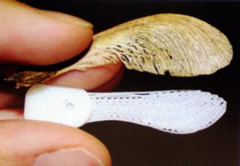

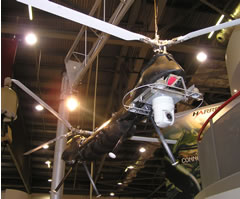
 OTUS, a hand launched mini UAV is designed to provide ‘over the hill’ intelligence and improve situational awareness for the lower echelon. The UAV is carried in a backpack, assembled within 10 minutes and can operate for over 60 minutes at a range of about 10 km from the launching point, flying at speeds of 15 – 45 knots. The UAV weighs about 8 kg (GTWO) and carries a maximum payload of one kilogram.
OTUS, a hand launched mini UAV is designed to provide ‘over the hill’ intelligence and improve situational awareness for the lower echelon. The UAV is carried in a backpack, assembled within 10 minutes and can operate for over 60 minutes at a range of about 10 km from the launching point, flying at speeds of 15 – 45 knots. The UAV weighs about 8 kg (GTWO) and carries a maximum payload of one kilogram.


 Two years ago Defense-Update covered the progress of the British
Two years ago Defense-Update covered the progress of the British 
 Lockheed Martin UK INSYS displayed at DSEi 07 the prototype of the British Army’s Lightweight Mobile Artillery Weapon System /Rocket LIMAWS(R) based on a British Supacat 600 series High Mobility Transporter (HMT) specialty vehicle. The company is expected to build four pre-production vehicles under a forthcoming MOD demonstration and manufacturing contract. The vehicle will be able to carry and launch the
Lockheed Martin UK INSYS displayed at DSEi 07 the prototype of the British Army’s Lightweight Mobile Artillery Weapon System /Rocket LIMAWS(R) based on a British Supacat 600 series High Mobility Transporter (HMT) specialty vehicle. The company is expected to build four pre-production vehicles under a forthcoming MOD demonstration and manufacturing contract. The vehicle will be able to carry and launch the  Back to the
Back to the 
 J8 is powered by a 2.8 liter four cylinder turbo-diesel engine producing 118kW (158 hp) and 400 Nm (295 lb. ft) torque. The engine is mated with a five speed automatic transmission. Special hood-mounted shorkel air intake and filtration system is used to improve the vehicle’s off-road performance in desert condition, enduring up to five hour operations in sandstorm and fording water at depth of 76.2 cm (30 inch). J8 is available in a two-door, pickup and four door configuration. The vehicle can be armored and is transportable in light cargo planes and helicopters.
J8 is powered by a 2.8 liter four cylinder turbo-diesel engine producing 118kW (158 hp) and 400 Nm (295 lb. ft) torque. The engine is mated with a five speed automatic transmission. Special hood-mounted shorkel air intake and filtration system is used to improve the vehicle’s off-road performance in desert condition, enduring up to five hour operations in sandstorm and fording water at depth of 76.2 cm (30 inch). J8 is available in a two-door, pickup and four door configuration. The vehicle can be armored and is transportable in light cargo planes and helicopters.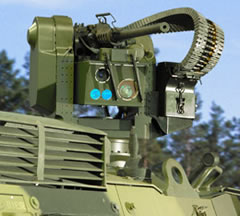
 The system offers a stabilized weapon mount and stabilized optronics, and automatic search and track functions supporting surveillance and target acquisition tasks. Trackfire provides the crew full under-armor operability, including the ability to reload the weapon under armor. The system can be fielded with appliqué armor protection, different optronic packages, and link to on board or remote battle management systems (BMS) or sensor packages. By integrating Trackfire with a Defensive Aids Suite – such as laser and/or acoustic gunshot detectors, the vehicle can provide even quicker response to close-in threats, be it threats against the vehicle or threats against dismounted troops.
The system offers a stabilized weapon mount and stabilized optronics, and automatic search and track functions supporting surveillance and target acquisition tasks. Trackfire provides the crew full under-armor operability, including the ability to reload the weapon under armor. The system can be fielded with appliqué armor protection, different optronic packages, and link to on board or remote battle management systems (BMS) or sensor packages. By integrating Trackfire with a Defensive Aids Suite – such as laser and/or acoustic gunshot detectors, the vehicle can provide even quicker response to close-in threats, be it threats against the vehicle or threats against dismounted troops. At DSEi 07 RAFAEL displayed its expanded family of Samson remotely controlled weapon stations, introducing the ‘Junior’ – lightweight remotely controlled weapon station, designed for installation on light armored vehicles and tanks, where weight and space restrictions limit the use of other systems. Samson Jr. comes at a net weight (unloaded) of about 80-110 kg. (depending on configuration). It is designed to mount 5.56mm or 7.62 mm weapons, such as the M249 and M240 machine guns, offering improved close-in protection and situational awareness. Samson JR is currently evaluated by the IDF for use as a loader’s operated weapon on Merkava Mk 4 tanks. The basic system is not stabilized, but RAFAEL offers the systems with optional enhancements and optronics including stabilization, fire control system, long range observation and laser rangefinder.
At DSEi 07 RAFAEL displayed its expanded family of Samson remotely controlled weapon stations, introducing the ‘Junior’ – lightweight remotely controlled weapon station, designed for installation on light armored vehicles and tanks, where weight and space restrictions limit the use of other systems. Samson Jr. comes at a net weight (unloaded) of about 80-110 kg. (depending on configuration). It is designed to mount 5.56mm or 7.62 mm weapons, such as the M249 and M240 machine guns, offering improved close-in protection and situational awareness. Samson JR is currently evaluated by the IDF for use as a loader’s operated weapon on Merkava Mk 4 tanks. The basic system is not stabilized, but RAFAEL offers the systems with optional enhancements and optronics including stabilization, fire control system, long range observation and laser rangefinder.
 At DSEi 07, the Finnish Advanced Modular Vehicle (AMV) 8×8 APC developed by Patria was ‘dressed’ with the
At DSEi 07, the Finnish Advanced Modular Vehicle (AMV) 8×8 APC developed by Patria was ‘dressed’ with the  360° protection against RPGs and other shaped charge threats (The company claims AMAP-ADS also defeats kinetic energy threats as well as IEDs).
360° protection against RPGs and other shaped charge threats (The company claims AMAP-ADS also defeats kinetic energy threats as well as IEDs). Another APS on display at DSEi is the LEDS 150 from Avitronics, the South African subsidiary of saab. LEDS is a family of countermeasures designed for the protection of land combat vehicles. Earlier versions of the system were limited to ‘signature-management’ and ‘soft kill’, while the more recent configurations, currently in development are added with ‘hard kill’ options. According to Cobus van der Merwe, senior business development executive with Saab Avitronics, all three capabilities will become an integral part of the protected vehicle, providing hemi-spherical, full spectrum active protection. The system displayed at DSEi 07 on the Piranha III will be tested in Switzerland in December 07. Next year the system is scheduled for evaluation by the US Army, under its Foreign Comparative Test Program. The active protection LEDS is proposed in three versions. Saab expects LEDS 150, the third level, to become operational on Piranha platforms from mid 2009. LEDS 150 has been designed to defeat rocket propelled grenades and antitank guided missiles (ATGM). The system uses an advanced sensor package associated with two High Speed Direction Launchers (HSDL) , loaded with six ‘Mongoose’ hard kill projectiles each. The system has already demonstrated the capability to defeat 105mm tank rounds and RPG-7 (Rocket Propelled Grenades). A more ambitious system, designated LEDS 200 is in development, to defeat multi-band threats while LEDS 300 will be capable to defeat kinetic energy projectiles and anti-tank missiles at longer ranges.
Another APS on display at DSEi is the LEDS 150 from Avitronics, the South African subsidiary of saab. LEDS is a family of countermeasures designed for the protection of land combat vehicles. Earlier versions of the system were limited to ‘signature-management’ and ‘soft kill’, while the more recent configurations, currently in development are added with ‘hard kill’ options. According to Cobus van der Merwe, senior business development executive with Saab Avitronics, all three capabilities will become an integral part of the protected vehicle, providing hemi-spherical, full spectrum active protection. The system displayed at DSEi 07 on the Piranha III will be tested in Switzerland in December 07. Next year the system is scheduled for evaluation by the US Army, under its Foreign Comparative Test Program. The active protection LEDS is proposed in three versions. Saab expects LEDS 150, the third level, to become operational on Piranha platforms from mid 2009. LEDS 150 has been designed to defeat rocket propelled grenades and antitank guided missiles (ATGM). The system uses an advanced sensor package associated with two High Speed Direction Launchers (HSDL) , loaded with six ‘Mongoose’ hard kill projectiles each. The system has already demonstrated the capability to defeat 105mm tank rounds and RPG-7 (Rocket Propelled Grenades). A more ambitious system, designated LEDS 200 is in development, to defeat multi-band threats while LEDS 300 will be capable to defeat kinetic energy projectiles and anti-tank missiles at longer ranges. RAFAEL unveiled at DSEi 07 a lightweight version of the
RAFAEL unveiled at DSEi 07 a lightweight version of the 
 MacNeillie developed the
MacNeillie developed the  Based on a standard Iveco medium truck chassis which has been in military service for the past 15 years,
Based on a standard Iveco medium truck chassis which has been in military service for the past 15 years,  BAE Systems Land Systems OMC of South Africa displayed at DSEi the latest version of the
BAE Systems Land Systems OMC of South Africa displayed at DSEi the latest version of the 
 MoD is evaluating several concepts proposed and demonstrated with under each company’s initiative and funding. Among these was the demonstration of the Manned Turret Integration Program (MTIP) and CTA’s 40mm cannon, firing Case telescoped ammunition. Selex Sensors and Airborne Systems (Selex S&AS) is offering the HITFIST 30 two-man turret from its sister company Oto Melara, both subsidiaries of the Italian Finmeccanica group. The turret is fitted with an ATK MK44 30mm cannon (with growth potential to 40mm) and a 7.62 mm coaxial machine gun.
MoD is evaluating several concepts proposed and demonstrated with under each company’s initiative and funding. Among these was the demonstration of the Manned Turret Integration Program (MTIP) and CTA’s 40mm cannon, firing Case telescoped ammunition. Selex Sensors and Airborne Systems (Selex S&AS) is offering the HITFIST 30 two-man turret from its sister company Oto Melara, both subsidiaries of the Italian Finmeccanica group. The turret is fitted with an ATK MK44 30mm cannon (with growth potential to 40mm) and a 7.62 mm coaxial machine gun.
 Other modifications are planned for the FV432 Mk3 (Bulldog) armored troop carrier, which has recently received enhanced armor protection. To sustain the heavier load, the vehicle is fitted with Darlington-built B-series Cummins engines 186kW (250hp) engines, extending the vehicle’s service life until 2025. The old FV432 Mk2 also provides a platform for system integration evaluation by Selex S&AS. As part of the company funded Vehicle Systems Integration Lab (VSIL), demonstration and evaluation program, the APC was fitted with integrated electronic, optronic and communications devices providing tactical navigation, situational awareness, mapping and communications. Situational awareness is enhanced both for ‘battlefield awareness’ as well as covering the immediate vicinity of the vehicle and even on board, using multiple, panoramic thermal cameras. These capabilities could be enhanced by sharing situational awareness with dismounted infantry, over a wireless link. The vehicle also uses an integrated weapon system (demonstrating the RAFAEL Mini Samson platform fitted with a 0.5″ Cal heavy machine gun). Further integration currently underway includes hostile fire detection systems.
Other modifications are planned for the FV432 Mk3 (Bulldog) armored troop carrier, which has recently received enhanced armor protection. To sustain the heavier load, the vehicle is fitted with Darlington-built B-series Cummins engines 186kW (250hp) engines, extending the vehicle’s service life until 2025. The old FV432 Mk2 also provides a platform for system integration evaluation by Selex S&AS. As part of the company funded Vehicle Systems Integration Lab (VSIL), demonstration and evaluation program, the APC was fitted with integrated electronic, optronic and communications devices providing tactical navigation, situational awareness, mapping and communications. Situational awareness is enhanced both for ‘battlefield awareness’ as well as covering the immediate vicinity of the vehicle and even on board, using multiple, panoramic thermal cameras. These capabilities could be enhanced by sharing situational awareness with dismounted infantry, over a wireless link. The vehicle also uses an integrated weapon system (demonstrating the RAFAEL Mini Samson platform fitted with a 0.5″ Cal heavy machine gun). Further integration currently underway includes hostile fire detection systems.